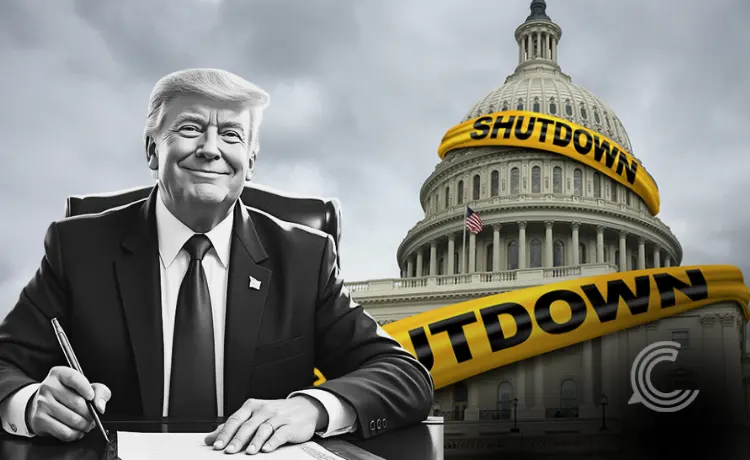Donald Trump Ends US Shutdown: 3-Week Deal Signed Without Border Wall Funding

Key Points:
- President Donald Trump signed legislation to end the longest government shutdown in U.S. history, reopening federal agencies after a 43-day impasse
- The bipartisan bill provides temporary funding for most of the government through January 30, and includes full-year appropriations for several key departments
- The deal ensures backpay for the hundreds of thousands of federal workers who were furloughed or worked without pay, and restores vital services like food assistance and air traffic control
President Donald Trump on Wednesday signed into law a critical spending package, officially ending the longest government shutdown in U.S. history. The move, coming hours after the House of Representatives approved the measure, concludes a protracted 43-day political stalemate that had crippled federal services and caused immense financial strain for nearly a million federal employees and their families.
The shutdown, which began on October 1, resulted from a bitter congressional dispute over federal funding negotiations. The final resolution was reached through a bipartisan Senate deal that passed the upper chamber earlier in the week before gaining House approval.
Reopening the Doors to Government
Trump’s signature immediately initiated the process of restoring full operations across the federal government. The legislation, titled the “Continuing Appropriations, Agriculture, Legislative Branch, Military Construction and Veterans Affairs, and Extensions Act, 2026,” is multifaceted.
It primarily includes a Continuing Resolution (CR), which extends funding for the majority of federal departments and agencies at existing levels through January 30, 2026. This stopgap measure is intended to give lawmakers more time to complete the detailed, full-year appropriations bills.
Moreover, the package also includes three full-year appropriations bills for Fiscal Year 2026. These cover the Department of Veterans Affairs and military construction projects, the Department of Agriculture and the Food and Drug Administration (FDA), and legislative branch operations.
Relief for Federal Workers and Essential Services
One of the most immediate and significant reliefs of the agreement is the guaranteed backpay for the estimated 650,000 furloughed federal workers and the additional 600,000 deemed “essential” who had been forced to work without compensation since the government shutdown began. This provision resolves a major point of anxiety and financial hardship for federal families nationwide.
The bill also restores critical social and economic programs. For instance, it fully funds the Supplemental Nutrition Assistance Program (SNAP), formerly known as food stamps, through September 2026. The interruption of SNAP benefits had created a major crisis for over 42 million Americans just before the holiday season. The Department of Agriculture announced that most low-income Americans would receive their full food aid benefits within 24 hours of the bill being signed.
Furthermore, the end of the deadlock is expected to ease widespread disruptions to air travel. The massive strain on unpaid air traffic controllers and Transportation Security Administration (TSA) agents had led to numerous flight cancellations and delays across the country.
A Political Compromise and Future Concerns
The resolution represents a complex political compromise, where a key Democratic demand was left unaddressed in the final funding bill. Democrats had fought for an extension of health insurance tax credits under the Affordable Care Act (ACA), which are set to expire soon. Without this extension, millions of Americans could face sharply increased premiums.
However, a commitment from Senate leadership to hold a separate vote on a bill to extend the ACA subsidies by mid-December ultimately convinced a coalition of moderate Democrats to break ranks and support the deal. House Speaker Mike Johnson remarked on the resolution, “History reminds us that shutdowns never change the outcome — only the cost paid by the American people. This Democrat-led crisis proved just that,” a quote reported by the House Appropriations Committee.
Lasting Economic and Human Toll
The record-breaking duration of the government shutdown left a lasting mark on the U.S. economy. The Congressional Budget Office (CBO) estimated that billions in economic activity would be permanently lost. The human toll, however, was perhaps more profound, impacting everything from national parks to federal loan processing and even consumer sentiment, which dropped to a three-year low during the impasse, according to a report by PIB.
While President Trump’s signature officially closes this historic chapter of government non-funding, the fundamental disagreements over federal spending remain. Lawmakers now face a fresh, albeit shortened, deadline in late January 2026 to pass comprehensive funding measures, leaving the spectre of another shutdown looming over Washington.



